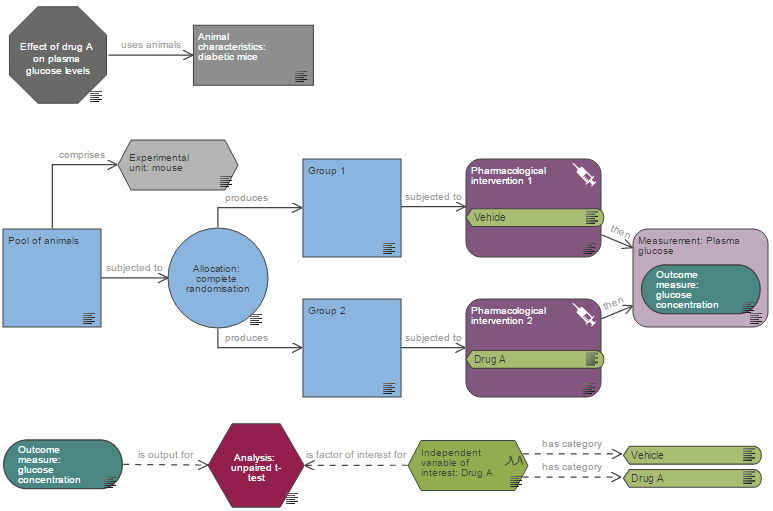Improving the design of animal experiments: Introducing the Experimental Design Assistant (EDA)

Scientists using animals in research have a responsibility to ensure that the studies are appropriately designed, conducted, analysed and reported so that they impartially and robustly answer the question they are intended to and truly add to the knowledge base.
Failure to fully embrace this responsibility wastes animals and other resources and ultimately undermines the "contract" with the public that permits the use of animals in research.
Unfortunately there is a large body of evidence, including from the NC3Rs, to show that many animal studies are poorly designed, analysed and reported and that this has significant implications in terms of reproducibility and the translation of findings into potential clinical benefits. Here NC3Rs programme manager Nathalie Percie du Sert describes a new exciting online tool which is designed to tackle the problem – the Experimental Design Assistant (EDA).
In 2010, we published the ARRIVE guidelines, to improve the reporting of in vivo research. To complement this we have been working to develop a resource to help researchers improve the design and analysis of their experiments using animals, avoiding all of the pitfalls that have been previously identified such as failure to avoid subjective bias, using the wrong number of animals and issues with randomisation. The EDA is an online web application, with an associated website which contains a wealth of information and advice on experimental design. It was developed in collaboration with an expert working group of in vivo scientists and statisticians from academia and industry, and Certus Technology, a team of software designers specialised in innovative software for the life sciences.
In the EDA, experiments are represented as diagrams, with nodes and links, which break the experiment into its component parts. This is a novel approach and it is unusual to think about an experiment in this way. For this reason it might take a little time to get used to the EDA.

EDA diagram of an experiment representing a simple two-group comparison
Using the EDA has many benefits:
- Building a diagram from basic components leads to a greater understanding of experimental design, the visual representation enables the user to clarify their thoughts and allows quick identification of elements which might impact on the robustness of the findings.
- The system provides feedback on the diagram which helps improve the design. In the “back end” of the system we have built a dataset of rules, which trigger prompts in specific situations. The prompts provide information to help the user optimise their experimental plan and for example highlight the implications of some of the design choices made or point out issues with the internal consistency such as where two variables are confounded. We will continue adding rules into the dataset so that the system can recognise more subtle issues and increase the relevance of the feedback for more complex experimental designs.
- The EDA includes dedicated functionalities to provide support for randomisation, blinding and sample size calculation.
- The diagram forms an explicit description of the experimental plan, which can easily be shared within the lab or with collaborators. This transparency helps communication and allows critical review by others.
We are really excited to be launching the EDA and look forward to hearing what you think about it. We have done extensive testing with scientists from a whole range of disciplines, institutions and career stages and the feedback has been fantastic. As with any new software, the first release of a system may have some teething issues. If you do encounter any problem, please do report them to eda@nc3rs.org.uk. Your feedback will help us ensure that the system improves and evolves according to your needs.
System requirements
We recommend using the EDA with the latest stable release of Chrome. Alternatively, the latest stable release of Mozilla Firefox or Safari can also be used.
The EDA is not currently compatible with mobiles and tablets. We intend to support IE11 and Edge in later releases.
Please note that the EDA will not load in Internet Explorer browsers prior to IE11, please use Chrome, Firefox or Safari.
Using the EDA in an unsupported or out-of-date browser may result in:
- being unable to access the EDA
- loss of functionality of EDA features
- display issues while using the designer
References
-
BEGLEY, C. G. & ELLIS, L. M. 2012. Drug development: Raise standards for preclinical cancer research. Nature, 483, 531-3.
-
PRINZ, F., SCHLANGE, T. & ASADULLAH, K. 2011. Believe it or not: how much can we rely on published data on potential drug targets? Nat Rev Drug Discov, 10, 712.
-
KILKENNY, C., PARSONS, N., KADYSZEWSKI, E., FESTING, M. F., CUTHILL, I. C., FRY, D., HUTTON, J. & ALTMAN, D. G. 2009. Survey of the quality of experimental design, statistical analysis and reporting of research using animals. PLoS One, 4, e7824.
-
KILKENNY, C., BROWNE, W. J., CUTHILL, I. C., EMERSON, M. & ALTMAN, D. G. 2010. Improving bioscience research reporting: the ARRIVE guidelines for reporting animal research. PLoS Biol, 8, e1000412.
-
IOANNIDIS, J. P., GREENLAND, S., HLATKY, M. A., KHOURY, M. J., MACLEOD, M. R., MOHER, D., SCHULZ, K. F. & TIBSHIRANI, R. 2014. Increasing value and reducing waste in research design, conduct, and analysis. Lancet, 383, 166-75.
